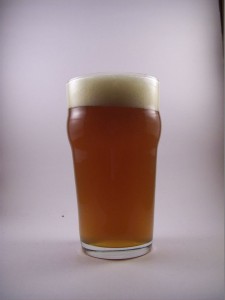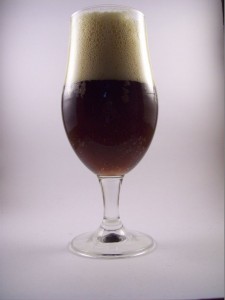A subtle, sweet nose with just a hint of smoke is how the rauch introduces itself. This is misleading as the taste reshuffles the flavors with a strong smokiness backed by mild malt sweetness. I really like how this turned out because smoked beers can so easily go wrong. There’s no sharp, peat related flavors nor is their anything suggesting barbequed meat. I don’t get any real hoppiness and the smoke creeps into the finish exactly where a mild bitterness would normally be. It’s not terribly complex but works wonderfully as something different. I like this as evidence that different beers can be quite distinct without relying on huge, over the top flavors.
The rauch started with four and a half pounds of Pilsner and a near equal amount of smoked malt: three pounds, ten ounces. I believe it was beechwood smoked. The recipe also included twenty-two ounces of Munich, ten of Caramunich II, three of Melanoidin, and an ounce and a half dash of black malt. The 90-minute Pilsner boil included Hallertauer additions of 1.5 ounces at sixty and 0.5 ounces at ten minutes. Starting gravity was low at 1.046 but the 1.013 finish was exactly right. White Labs #830 lager yeast was used for the whole fermentation.









